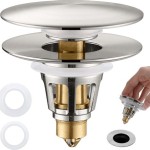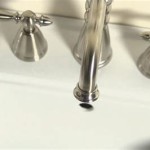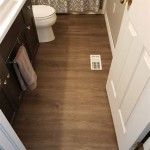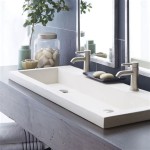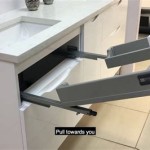DIY Bathroom Sink: A Comprehensive Guide
A bathroom sink is an essential fixture in any bathroom, but it can also be a significant expense. If you’re looking to save money or simply want to add a personal touch to your bathroom, a DIY bathroom sink project might be the perfect solution. This comprehensive guide will walk you through the steps involved in creating your own bathroom sink, from selecting the right materials to installing the finished product.
Choosing the Right Materials
The first step in any DIY project is selecting the right materials. When it comes to a bathroom sink, you have a wide array of options to choose from. Here are a few key factors to consider:
1.
Material:
-Ceramic:
Ceramic sinks are a popular choice due to their durability, affordability, and wide range of styles. -Porcelain:
Porcelain sinks are known for their elegance and resistance to stains. -Glass:
Glass sinks offer a modern and sleek aesthetic, but they can be more fragile than other materials. -Stone:
Stone sinks, such as granite or marble, provide a luxurious and timeless look. -Metal:
Metal sinks, like stainless steel or copper, are durable and easy to clean. -Acrylic:
Acrylic sinks are lightweight, affordable, and available in various colors.2.
Style:
-Vessel:
Vessel sinks sit on top of the countertop, creating a dramatic and contemporary look. -Undermount:
Undermount sinks are installed beneath the countertop, offering a sleek and modern design. -Top-mount:
Top-mount sinks are installed on top of the countertop, offering a classic and traditional look. -Wall-mounted:
Wall-mounted sinks offer a space-saving solution and a minimalist aesthetic.3.
Size and Shape:
-Size:
Consider the available space in your bathroom and the intended use of the sink. -Shape:
Choose a shape that complements your bathroom design and personal preferences.Building the Sink Base
Once you’ve chosen your sink, the next step is to create a base for it. This can be as simple as a wooden platform or as elaborate as a custom-built cabinet. Here are some considerations:
1.
Materials:
Choose a sturdy and water-resistant material for your sink base. Wood, plywood, or MDF are popular choices. 2.Design:
Consider the style and size of your bathroom, as well as the plumbing connections needed. 3.Construction:
Carefully measure, cut, and assemble the base, ensuring it is level and sturdy enough to support the weight of the sink. 4.Plumbing:
Connect the drainpipe and water supply lines to the base.Installation and Finishing Touches
The final step is to install the sink and add any finishing touches. Here’s what’s involved:
1.
Installation:
Carefully place the sink on top of the base, ensuring it is centered and level. Secure the sink to the base using appropriate fasteners. 2.Plumbing Connections:
Connect the sink’s drain and water supply lines to the base’s plumbing connections. 3.Sealing:
Use sealant to prevent leaks and ensure a watertight connection between the sink and the base. 4.Finishing Touches:
Add any additional features, such as a faucet, soap dispenser, or vanity mirror.By following these steps, you can create a unique and functional bathroom sink that perfectly complements your bathroom design and meets your individual needs. Remember to consult with a professional if you have any doubts about the project or are working with complex plumbing connections.

10 Diy Bathroom Vanity Ideas The Family Handyman

Diy Bathroom Vanity 12 Rehabs Bob Vila
:max_bytes(150000):strip_icc()/build-something-diy-vanity-594402125f9b58d58ae21158.jpg?strip=all)
16 Diy Bathroom Vanity Plans You Can Build Today

Rustic Bathroom Vanity Kreg Tool

How To Build A Diy Bathroom Vanity Angela Marie Made

13 Crazy Creative Diy Bathroom Vanities Decoist

Diy Bathroom Vanity For 65 Angela Marie Made

10 Diy Bathroom Vanity Ideas The Family Handyman
:max_bytes(150000):strip_icc()/athomewithashley-07bb4ab1f6354e50b32cef75d1fba3ec.jpg?strip=all)
25 Diy Bathroom Vanity Ideas Perfect For Storage

10 Diy Bathroom Vanity Ideas 2024 The Storage Plus Unique Small Vanities
Related Posts


